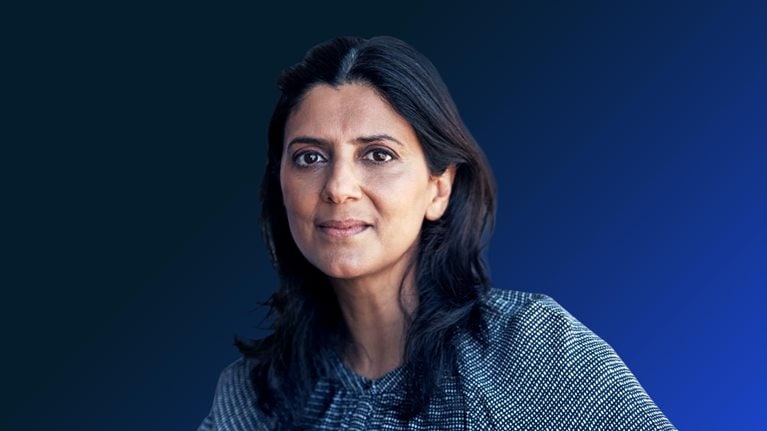In this edition of Author Talks, McKinsey Global Publishing’s Raju Narisetti chats with Joann S. Lublin, former management news editor for the Wall Street Journal. In her new book, Power Moms: How Executive Mothers Navigate Work and Life (HarperCollins, February 2021), the Pulitzer Prize–winning journalist draws on the experiences of two generations of successful women—boomers and Gen Xers— to measure how far we’ve come and how far we still need to go. An edited version of the conversation follows.
What problem were you trying to solve with this book?
The root problem I was trying to solve was to determine to what extent the “motherhood penalty” still exists. The motherhood penalty takes a lot of forms. It was initially documented back in 2007, when researchers found that if you submitted a resume in which it was clear that the resume was coming from a woman with children, she was much less likely to be called for an interview than either a man with children, or men and women whose resumes made it clear that they had no children.
And that motherhood penalty, from a hiring standpoint and employment standpoint, still persists. In fact, the wage gap between women with children under 18 and dads with children under 18 is about 69 cents earned by the mother for every dollar earned by the dad—a much wider gap than exists between women and men [generally].
So the question that I was trying to explore was, has the motherhood penalty diminished at all as these younger executive mothers, women who were in their 30s and early 40s when I interviewed them, moved into executive roles? And what I found was that it has indeed, to some extent, but that the women still suffer from gendered role expectations.
What surprised you most about writing the book—whether in the research or response?
When interviewing the 86 executive mothers for this book, some of them cried or choked up during the course of the interviews. And they turned tearful for lots of different reasons, sometimes when they were recounting ugly quarrels with their husbands, whom they were separated from.
Other cases, it was because they were being treated poorly as women on the job. Some of them got choked up when they were feeling guilty about those frequent business trips they took when their kids were little. And obviously, when there was a big health crisis with a family member, whether it was a child or an aging parent or their own life-threatening health condition, some of them choked up about that.
You say it’s important to accept the imperfections. Why is that?
Accepting our imperfections doesn’t mean that you stop trying to be the best you can be, especially if you’re cognizant of the workplace in which you are operating. For individuals, that means you accept the fact that you’re imperfect and accept the fact that there are going to be cases in which you are held to a higher standard, but you may not be able to meet those standards. You just do your darned best.
Accept the fact that you’re imperfect and accept the fact that there are going to be cases in which you are held to a higher standard, but you may not be able to meet those standards. You just do your darned best.
And what it means for employers is that we need to be having mandatory and regular unconscious-bias training, so we understand the ways in which men and women alike put themselves in boxes. I think men are equally subject to stereotypical expectations—it’s why we see a relatively low percentage of men take paid parental leave when it’s available.
When I moved from Chicago to Washington for the Wall Street Journal, when I was seven months pregnant with our first child, and my husband essentially followed me, the guys in the Journal office kind of laughed at my husband, that he would be so dumb as to follow his wife’s career.
The juggling act called life
How can companies help with the notion of ‘work–life sway’?
Well, I think for starters, employers need to understand what the concept is.
When I started reporting for this book and began meeting with the younger executive mothers, women in their 30s and early 40s, the very first woman I met said, “By the way, have you heard of work–life sway?” I said, “Is that like work–life balance?” “No,” she replied.
The whole idea of work–life sway is that we accept as a given that when we need to be 110 percent there for our jobs, for our employers, we will do so, but if life interferes and we’ve got to do something that deals with our family, we will move out of work mode and move into family mode.
So how can this concept apply to employers? Now that we’ve had this successful natural experiment in working from home, I think employers can make a permanent commitment to letting individuals work from home, either part-time or full-time, and in so doing, they can trust those individuals, particularly those who have parenting responsibilities, to figure out what time of day works best for them to work, and to allow, for instance, protected periods of time during the day.
[Employers] can make a permanent commitment to letting individuals work from home...and trust those individuals, particularly those who have parenting responsibilities, to figure out what time of day works best for them to work.
Some companies during the pandemic have chosen to end the work day at the same time that school ends, because whether you’re educating your kids from home or they’re physically back in school, you are still working from home, and frankly, it gets a little chaotic around 3:30 p.m.
The other thing is that you need to show empathy by checking in frequently. Even if you yourself have children, they may not be as young or as vulnerable as [the children of] some of the employees that are working for you, and you need to be asking those working dads and moms, “Am I doing everything that you need, from your point of view, that enables you to be as effective and efficient as you possibly can?”
Did you find any distinctions among women of color in your research?
The 16 women of color were among the 86 executive mothers. One distinction was that among the women of color, the common thread I noticed was that they were, to a great extent, more able to rely on extended family to help with childcare issues than white women were. A really great example of this involved Inhi Cho Suh, who is an IBM executive and a younger-generation mom.
She was born in South Korea and immigrated here with her parents when she was five. About a decade ago, she and her husband had an opportunity to relocate to the New York suburban area, so they would both take jobs at IBM.
The problem was that they didn’t know anyone where they were moving to, and they didn’t have any local relatives, so she reached out to her parents, both of whom at that point had their own small businesses, and asked them for help. They agreed to sell their businesses and move in with Inhi, her husband, and their two sons, and essentially became a second set of parents to their grandsons.
When Inhi talked about how her mother explained why she did this, she choked up. Her mother said, “My sun is setting and yours is rising,” and that was why she was willing to sell her business, and why Inhi’s father was willing to sell his business.
Generational wisdom
Are there lessons for power daughters?
Yes, I think there are many lessons for the daughters of power moms, and the daughters of future power moms. And one is that you’ve got a secret resource there. So many of these boomer mothers ended up being informal career coaches for their daughters as they reached adulthood.
And frankly, the daughters could not care less when they were in high school, and often throughout college. In fact, they resented the way mom was trying to micromanage their selection of college, and what they were going to major in, and what field they were going to go into afterwards.
But you know what? These moms had figured out how to make it in the corporate world, and to the extent their daughters wanted to be in the corporate world, they ought to take advantage of her knowledge, her experience, her networking skills, her connections, and her ability to figure out what is or isn’t going right when they get into that job.
How do you think your mother would have responded to your book?
Well, it’s very ironic that you should ask that question, because the last time I saw my mom was around this time last year, when I visited her in her assisted-living facility in Atlanta. At that point, I was nearing completion of the book, but obviously she never got to read it.
I said, “Mom, this book will be dedicated to you,” to which she replied, “Read me the dedication.” And at that point, the dedication said, “To my mother, Betty Lublin. She’s always been my biggest supporter in my role as a working mom.”
And she said, “Oh, no, that will not do. I wasn’t always your biggest supporter. There were lots of things that I didn’t like about how you were doing this.” And she was right. When I was pregnant with my son, she said to me, “Of course you’re going to now quit journalism and become a teacher.” To which I replied, “Why would I want to do that?” And she said, “So you can have your summers off.”
And so I said, “OK, Mom, I’ll rewrite the dedication. I’ll say, ‘She was always my biggest supporter and my biggest critic for my role as a working mom.’” She replied, “No, reverse it.” I think she would get a big kick out of the book. I think she really would.



